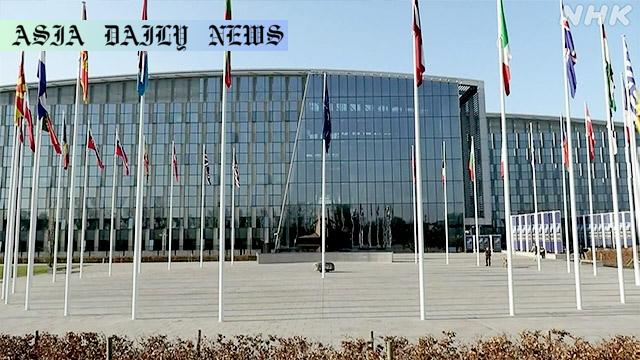NATO Defense Spending: US President pushes members to raise defense spending to 5% GDP; issues with Russia and Ukraine to be addressed.
- NATO members face pressure to raise their defense budgets to 5% of GDP, with key discussions around global security priorities.
- US President emphasizes concerns over NATO’s preparedness to address threats from Russia and deepening China-Russia ties.
- High-ranking officials from Europe, Canada, Ukraine, and Indo-Pacific nations involved in critical deliberations in Brussels.

Heightened Tensions and Calls for Increased NATO Defense Spending
The current geopolitical landscape has pushed NATO defense spending to the forefront of conversations among its member nations. As NATO foreign ministers convene in Brussels, a significant portion of the dialogue focuses on US President Donald Trump’s demand for other member nations to increase their national defense spending to 5% of GDP. This request signals a shift in US policy, emphasizing accountability from European and Canadian allies, who are currently expected to spend 3% GDP on defense. With tensions rising on several fronts, including the long-term threat from Russia, NATO’s financial and strategic unity is under scrutiny.
The underlying drive for heightened defense spending stems from global security challenges, including Russia’s continued territorial aggression and mounting coordination with China. NATO Secretary General Mark Rutte has echoed these sentiments, urging members to enhance their financial commitments to ensure collective security. The emphasis on strengthening NATO aligns with the bloc’s mission to protect member nations against evolving threats and consolidate their resources for mutual benefit. The meeting has brought together not only NATO members but also officials from the Indo-Pacific region, underscoring the importance of international collaboration in addressing security concerns.
Supporting Ukraine Amid Prolonged Insecurity
One of the key topics of discussion during the NATO meeting involves ongoing support for Ukraine. With the Ukrainian Foreign Minister Andrii Sybiha in attendance, deliberations focus on how the alliance can bolster Ukraine in the face of Russian aggression. NATO members aim to deliver a message of unity, emphasizing that aggression against Ukraine will be met with collective resistance and long-term support.
Ukraine’s plight has been symbolic of the broader challenges facing NATO in maintaining territorial sovereignty and international law. Several NATO allies have expressed their commitment to sending military aid, humanitarian assistance, and financial support to Ukraine. Beyond Ukraine, the organization is exploring strategies for preventing Russia from exploiting its influence across Eastern Europe and beyond. As the situation escalates, NATO’s role in addressing such regional conflicts becomes paramount, demanding alignment among member nations and beyond.
Engaging New Partners in the Indo-Pacific Region
The participation of Japanese Foreign Minister Iwaya Takeshi and other Indo-Pacific representatives signals NATO’s growing recognition of geopolitical challenges extending beyond its traditional sphere. Industry collaborations between NATO and the Indo-Pacific nations are being discussed, with an emphasis on addressing China’s increasing influence and China’s alignment with Russia.
This expansion of partnerships reflects NATO’s evolving strategy to remain relevant in a globalized security environment. By forming alliances with countries beyond the Atlantic, NATO is reinforcing the idea that security today transcends geographical boundaries. The potential for collaborative ventures in defense technologies, cybersecurity initiatives, and intelligence sharing with Indo-Pacific nations could elevate NATO’s capabilities in facing modern challenges effectively.
Long-term Strategy for Collective Defense
As NATO debates the transformation of its financial and strategic priorities, the overarching goal remains to safeguard collective defense in a volatile world. The push to increase defense spending to 5% of GDP may face resistance from some member states, yet aligning on common goals could help reaffirm NATO’s front against external threats. Moreover, addressing internal divisions will be critical in maintaining unity, particularly as members grapple with their domestic economic constraints.
As the organization continues to define its long-term strategies, its resilience and adaptability as a defensive alliance will become increasingly pivotal. With challenges ranging from hybrid warfare, cyber threats to outright military aggression, NATO’s future decisions will undeniably shape the global power dynamics and the stability of the regions under its mandate.



Commentary
A Pivotal Moment for NATO
The current NATO meeting in Brussels highlights the organization’s efforts to adapt to a rapidly changing global landscape. As international conflicts become more complex and interconnected, NATO’s reevaluation of its defense expenditures signals its strategic pivot toward a more robust preparedness. The demand for increased contributions from member states is both necessary and challenging. While some members may view the 5% GDP target as excessive, this benchmark could signify NATO’s commitment to its collective defense mission in the face of escalating threats.
The Importance of Supporting Ukraine
Ukraine’s plight continues to stand as a grim reminder of the consequences of unchecked aggression. NATO’s direct involvement in ensuring long-term support, both for military and humanitarian efforts, underlines the organization’s relevance. It also showcases NATO’s capacity to rally its members and partners outside the organization to address global challenges. Ukraine can serve as both a rallying cry and an opportunity for NATO to define its identity as a proactive and resilient defensive bloc.
Engaging with New Partners
The inclusion of Indo-Pacific nations, like Japan, in NATO discussions reflects the alliance’s efforts to address global security challenges on multiple fronts. As China and Russia strengthen their ties, NATO’s proactive steps to collaborate globally demonstrate a forward-looking approach. By fostering partnerships beyond traditional members, NATO is embracing the evolving dimensions of modern security concerns.
Final Thoughts
NATO’s current initiatives may reshape its trajectory, addressing both immediate threats from adversaries like Russia and long-term goals of fostering international cooperation. While challenges like financial pressure and geopolitical tension remain, this meeting lays the groundwork for a more defined, unified NATO capable of tackling today’s pressing global challenges.